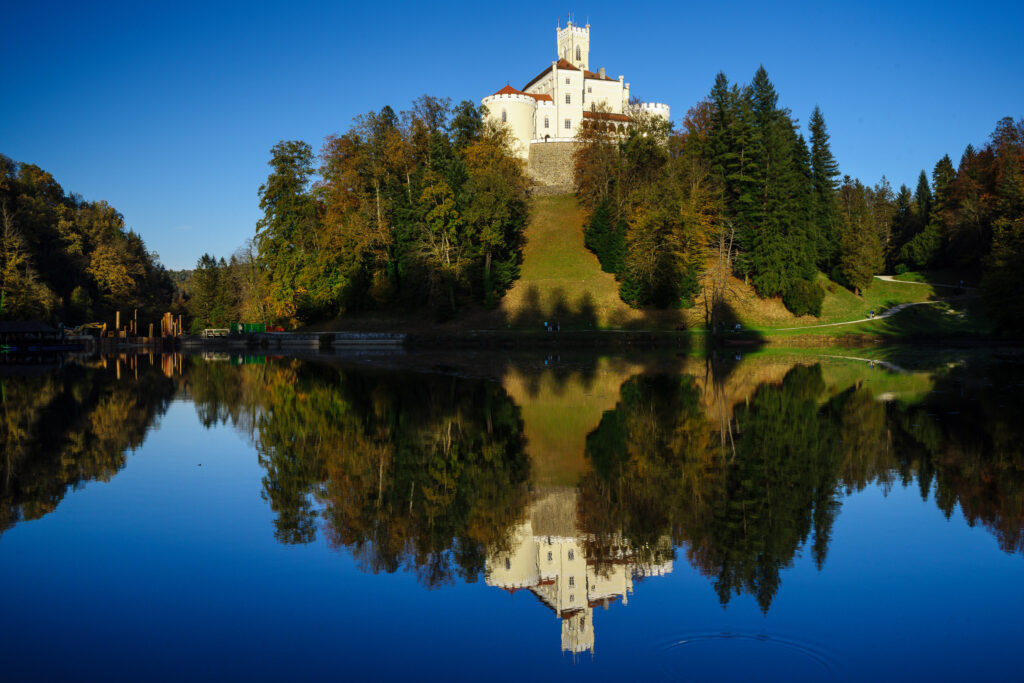When digital cameras were developing, in the early 2000s, there was a concern about sensor noise creeping up with the increase of resolution. The logic was simple: the sensor is an x*y array of photo elements. Each has a certain percentage of surface area that’s actually sensitive to light, and that area is at the bottom of the “cup” that is the photo element. Then there are the readout lines that reduce the photosensitive area even further. Each “cup” is basically a capacitor that increases its charge with impact of each photon to the photosensitive material at the bottom. After exposure, the camera reads out the capacitors, converting the level of charge into a digital number; let’s say it’s 8-bit, so there are 0-255 levels of brightness. This data makes up the raw file, which is grayscale. The colour information is created by the demosaicing process, since there is a Bayer matrix of colour filters in front of the sensor, and with some software magic in the raw converter, which consists of demosaicing and applying the gamma curve, you get the kind of a colour image you expect.
This, of course, is super simplified. In reality, not all sensors are of the same type; there are CCD and CMOS sensors, where CCD has a much bigger photosensitive area, and the CMOS sensor has theoretically all the disadvantages you can think of; much smaller photosensitive surface, and of lower photoelectric quality, and so on. The advantages are that CMOS has transistors for signal amplification for each pixel, at the very source of the signal, before reading it out. This, combined with the fact that CMOS technology is standard semiconductor tech that’s cheaper to make, eventually not only made up for all the drawbacks, but in fact created sensors that have much better behaviour at high gain settings, also known as high ISO. So, how does that work, exactly?
Well, we need to understand the origins of sensor noise, and there are many. Heat is one. Electromagnetic induction is another. Then there is the readout noise, where reading out each line passes electricity through it, and basically creates inductive noise in the adjacent lines. Then there’s the electromagnetic noise created by the computer in the camera (yes, a digital camera is essentially a computer very much like your smartphone) which needs to be shielded, and that’s kind of hard to do if you want to reduce weight as much as possible. Also, the computer generates heat, which eventually finds its way to the sensor, and then you realise why astronomers cool their camera sensors with liquid nitrogen. As it turned out, most of those problems were solved admirably in the early years of digital camera evolution, but some, like the demand for more photosensitive area, are a matter of physics and nothing can be done about them. Well, it turned out that people who made very small sensors for smartphones got very creative in getting around those issues since the financial incentives were huge, and people bought phones primarily based on how good the camera was. One of the major inventions was the backside illuminated sensor, which means that it’s no longer designed as a cup with photosensitive material at the bottom; basically, they turned the cup around so the photosensitive material is on top, and the amplifiers and readout lines are on the bottom. This increased the photosensitive area on the CMOS sensors by an order of magnitude, and probably allowed for putting more electronics per pixel, giving the designers room for more sophisticated signal processing on the source.
So, the expectation somewhere in 2004 was that you can put 11 megapixels of resolution on the 35mm full frame sensor, but you’ll get high noise at ISO 1250 already, and chromatic aberrations and vignetting are going to be nasty since the photons are hitting the “cups” in the corners at high angles of incidence, which means that most photons end up in the “walls” and not the sensitive area at the bottom, and also various wavelengths hit the sensitive area at different angles. It seemed that the increase in resolution is not going to be steep, and that, maybe, lenses have to be designed with that in mind; also, big sensors increasingly looked like a bad idea in the digital age, being expensive and creating huge vignetting and chromatic aberration issues.
However, Sony made a technological breakthrough making sensors for iPhones and other smartphone cameras, and when they moved that same technology to 35mm sensor size, it turned out they can make a 42 MP sensor with no vignetting and CA issues, and with less noise at ISO 6400 than the older 11 MP sensors had on ISO 1250. As it turns out, most of the old problems with pixel size, readout noise and cup-shaped pixels had limitations that stemmed from uninventive electronics design, rather than the limitations of quantum physics, and selling billions of phones tends to motivate technological development much better than selling millions of cameras.
So, what’s the current state of sensor technology, from the position of a photographer?
I look at the image quality from the position of what the colours look like, how much noise there is at low and high ISO, how well the noise cleans up in processing, and if there are other image defects such as banding, vignetting, CA and so on.
My initial impression is that the modern sensors have somewhat higher noise at low ISO compared to the older cameras, but in absolute terms this is a mild texture comparable to film grain and it doesn’t reduce image quality. However, when we take the resolution into the equation, and if we downsample a 61MP image to 6-8MP typical for those older cameras, we’ll get a much cleaner image, so there’s that. Basically, the low ISO noise is greater but it doesn’t matter. High ISO noise is improved to the point where I now consider ISO 12800 useable, when earlier ISO 3200 meant I was really pushing it. This means I now have two stops greater high ISO, and with better results.
As for the colours, they were excellent before and they are excellent now. If anything, I now have high-ISO colours that are comparable to low-ISO colours before.
As for the dynamic range, this improved significantly from the earlier years, and that’s the most surprising part, because the expectation was that the dynamic range will go down as you put more pixels on the same surface of silicon. I think we gained about two stops of useable dynamic range.
To summarise, the 35mm sensor resolution between Canon 1Ds and Sony A7RV increased from 11 MP to 61MP, high ISO increased from ISO 1250 (which looked less than great) to ISO 12800 (my personal limit for still retaining excellent image quality), and the dynamic range of the image is at least two stops better. Also, the vignetting and CA issues were solved, and the colour quality either remained the same or was improved.
So, the expected image degradation after increasing resolution by a factor of almost 6 did not happen, and instead we have the increase of image quality across multiple dimensions simultaneously. Also, since most photographers don’t actually need more than 24MP of resolution, the megapixel race seems to have peaked out, giving us 35mm cameras with sensor resolutions that strain all but the most perfect of lenses, incredible colour depth, incredible dynamic range and excellent behaviour on high ISO values.
As for the smaller sensor sizes, the APS-C and four thirds, they seem to have peaked out at 24-26MP resolutions, which is excellent and perfectly useable for most professional and amateur intents and purposes. A further increase in resolution would hit hard into the diffraction limits of their respective formats, which means the absolute size of the aperture would interfere with light and soften the image, and since this is an actual physical thing, it can’t be helped in any way other than increasing the format. However, by avoiding diffraction limits in this manner, you encounter shallow depth of field issues on larger formats, and this is not necessarily an upgrade.
A corollary of this is that if you are interested only in low-ISO image quality, you don’t need to print big and you want excellent colours and normal dynamic range, not only will a 10 year old used digital camera be perfectly fine; some of the 20 year old models will be fine as well. This means that an amateur photographer can get into photography at a very high level of image quality with very cheap used gear, unlike the early days of digital photography where even the new stuff was still unsatisfactory, the used stuff was terrible, and the prices of the new, state of the art gear were astronomical. The prices of used digital gear of high quality are comparable to what the prices of good used film gear were in the golden era of film, when one could get into photography cheaply, and still expect to be able to produce great looking images. For all intents and purposes, this is ideal.



